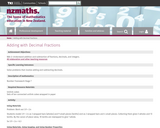
Students solve problems that involve adding decimals.
- Subject:
- Mathematics
- Material Type:
- Activity/Lab
- Provider:
- Georgia Department of Education
- Author:
- Georgia Department of Education
- Date Added:
- 02/26/2019

Students solve problems that involve adding decimals.

Students decompose numbers less than or equal to 10 into pairs in more than one way by using objects or drawings, and they will record each decomposition by a drawing or equation (e.g. 5= 2 + 3 and 5 = 4+1).
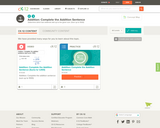
This short video and interactive assessment activity is designed to teach fourth graders about addition: completing the addition sentence.
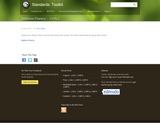
In this assessment task, students are shown a flash card and write down their answer, then when asked they show the group their answer.
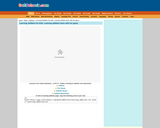
For this interactive, students use pictures to solve addition equations. There are two levels from which students can select.
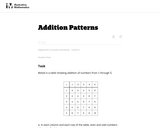
The purpose of this task is to study some patterns in a small addition table. Each pattern identified persists for a larger table and if more time is available for this activity students should be encouraged to explore these patterns in larger tables.
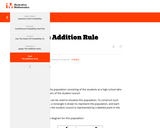
The purpose of this task is to provide practice calculating probabilities in the context of a chance experiment with equally likely outcomes and to allow students to develop the addition rule for calculating the probability of the union of two events.
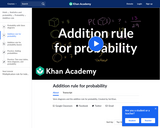
This video goes over Venn diagrams and the addition rule for probability.

For this interactive, students place numbers on the scale to make the number sentences true.

By now students have worked with many strategies to add and subtract numbers. Students will work in pairs. One student will think of an addition or subtraction problem and choose an efficient strategy to solve the problem. Then the student will give the problem to the other student who will solve the problem and explain his/her strategy to the partner. The problem poser will ask questions about the explanation or tell how the strategy matched the strategy he/she used. Students will discuss the benefits of a particular strategy. Then the other student will pose the next problem. The students will keep track of strategies used and try to create problems that will allow them to use more than one strategy. For the last few minutes of the activity the pairs can share out the different strategies they were able to use and explain. This lesson was developed by NCDPI as part of the Academically and/or Intellectually Gifted Instructional Resources Project. This lesson plan has been vetted at the state level for standards alignment, AIG focus, and content accuracy.

Students practice adding objects up to 20 by using pictures to solve number sentences in this interactive resource.

With this interactive, students are given a word problem to solve by adding three numbers. They type in their answer and click Check to see if their answer is correct.
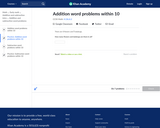
In this Khan Academy interactive, students will solve addition word problems using objects to represent the problem, when solving "add to - result unknown" problems.

A list of tips for content teachers with beginning English learners in their classroom.

A list of tips for content teachers with beginning English learners in their classroom.
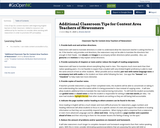
A list of tips for content teachers with beginning English learners in their classroom.
Added to resource: one additional tip for teachers to consider when working with newcomers in order to promote CRT principle(s).
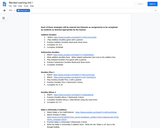
This unit is to be used with second grade students to teach addition and subtraction strategies, or remediate with students needing extra practice.

Students solve the addition or subtraction equation represented in the word problem in this interactive resource.
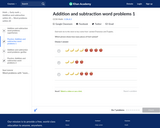
In this Khan Academy iinteractive, students will practice addition and subtraction word problems, within 20, with result unknown, change unknown, and addend unknown.
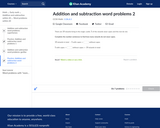
In this Khan Academy interactive, students will practice addition and subtraction word problems, within 20, with result unknown, change unknown, and addend unknown.